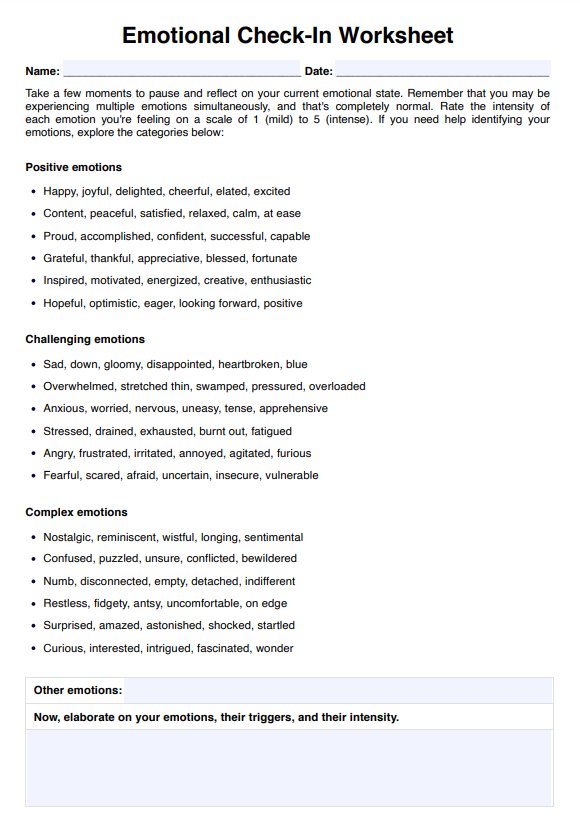The five steps for an emotional check-in are: Tune into your body to notice physical sensations that may indicate your emotional state; take a deep breath to calm your mind and prepare for reflection; ask yourself how you feel by using specific questions like “How am I feeling right now”; use descriptive words to accurately label your emotions; and consider what might be contributing to those feelings, reflecting on any external factors or internal thoughts that may influence your emotional state.

Emotional Check In Worksheet
Provide clients with a tool to practice self-awareness and emotional regulation with our Emotional Check-In Worksheet.
Emotional Check In Worksheet Template
Commonly asked questions
To perform an emotional check-in with yourself, start by finding a quiet space where you can focus. Begin with a body scan to recognize physical sensations, then take a few deep breaths to center yourself. Next, ask yourself how you feel and articulate those feelings using clear and descriptive language. Finally, reflect on any factors that may be affecting your emotions, allowing you to gain insights into your current mental state.
This worksheet can be used by anyone seeking to improve their emotional awareness and regulation, including students, educators, therapists, and individuals looking for personal growth. It is a structured tool for fostering self-reflection and a better understanding of emotions in various settings, such as classrooms or therapy sessions.
EHR and practice management software
Get started for free
*No credit card required
Free
$0/usd
Unlimited clients
Telehealth
1GB of storage
Client portal text
Automated billing and online payments











